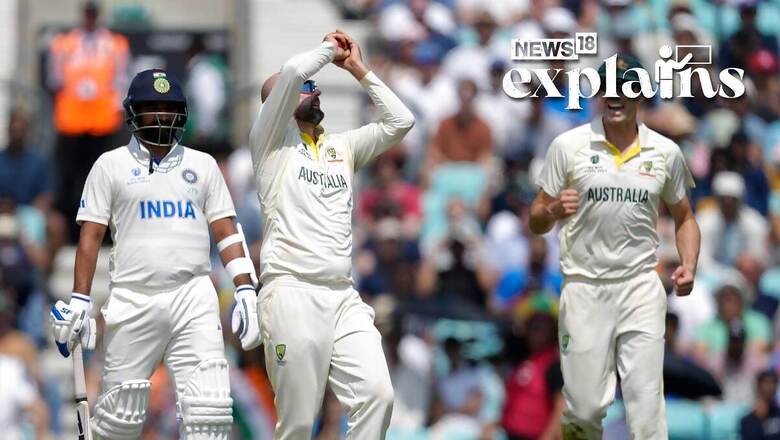
views
The situation took a turn for the worse for Team India after they received a heavy penalty from the International Cricket Council (ICC) following their loss to Australia in the World Test Championship final by 209 runs. The ICC announced that the Indian team has been fined the entire match fee for the final due to their slow over rate. This action was taken because Rohit Sharma and his team were five overs short of the target.
Australia has also been penalized and docked 80 percent of their match fee for being four overs behind. According to Article 2.22 of the ICC Code of Conduct, players are fined 20 percent of their match fee for each over their team fails to bowl within the allotted time.
What Happened?
Throughout the World Test Championship final, the slow over-rate was a persistent concern, as per reports. A significant amount of playing time was lost, with 44 overs, nearly half a day’s worth of play, not being bowled. On the second day, despite extending the play by half an hour, less than 75 overs were bowled, and this pattern repeated on the third day. Factors such as medical breaks and the time taken for the Decision Review System (DRS) also contribute to time loss during matches.
Australian captain Pat Cummins expressed his disappointment with the limited number of overs bowled. He noted that there are not many measures within the current rules to incentivize faster bowling, while also pointing out that there were several interruptions in play due to finger injuries requiring bandaging and similar incidents in the past few days. Fortunately, these delays did not ultimately impact the final result. Ideally, a full day of play should consist of 90 overs.
What’s a Slow Over Rate?
The over rate in cricket refers to the average number of overs bowled by the fielding team in an hour of play. The International Cricket Council (ICC) has set specific over rate targets for different formats of the game. In Test cricket, teams are expected to maintain an average of 15 overs per hour. In One Day Internationals (ODIs), the target is 14.28 overs per hour, and in Twenty20 (T20) matches, it is 14.11 overs per hour, according to a report by Sports Adda.
To give some context, in ODIs, the bowling team is given 3.5 hours to complete their allotted 50 overs, while in T20 matches, teams are expected to bowl their full quota of 20 overs within an hour and 25 minutes.
If a team fails to meet these predefined over rate targets, they are considered to have a slow over rate. As a consequence, the governing body may impose fines or even hand out bans to the team or its players.
Penalty for Slow Over Rate in Test Cricket
As per Article 2.22 of the ICC Code of Conduct for Players and Player Support Personnel, which deals with minimum over-rate offenses, players are fined 20 percent of their match fee for each over their team fails to bowl within the designated time.
In the case of captains Rohit Sharma and Pat Cummins, they acknowledged their guilt and accepted the prescribed sanctions. Therefore, formal hearings were not necessary as they admitted to the offense and agreed to the penalties proposed by the ICC.
Why Was Shubnam Gill Fined?
In another setback, Indian opener Shubman Gill has been fined 15 percent of his match fee for expressing his dissatisfaction. Gill was visibly upset with the umpire’s decision to rule him out in India’s second innings. He expressed his annoyance on social media platforms, leading to the additional fine and a total deduction of 115 percent from his match fee.
The ICC statement mentioned that Gill will face sanctions for appearing to criticize the decision to dismiss him, which breaches Article 2.7 of the ICC Code of Conduct relating to public criticism or inappropriate comments regarding incidents in international matches.
During the match, Gill was caught at third slip by Cameron Green after edging a delivery from Scott Boland. However, Gill refused to leave the crease, and the decision was referred to the third umpire, Richard Kettleborough. After reviewing the footage, Kettleborough declared Gill out, leaving him disappointed and Rohit Sharma expressing his disbelief. The decision received mixed reactions, with the Indian media criticizing it while the Australians seemed satisfied with Kettleborough’s call.
In the post-match press conference, Rohit expressed his disappointment, stating that more camera angles should have been available for reviewing the decision, referring to the IPL where multiple camera angles are provided. On the other hand, Australian captain Pat Cummins defended Kettleborough’s decision, calling him the best umpire in the world.




















Comments
0 comment